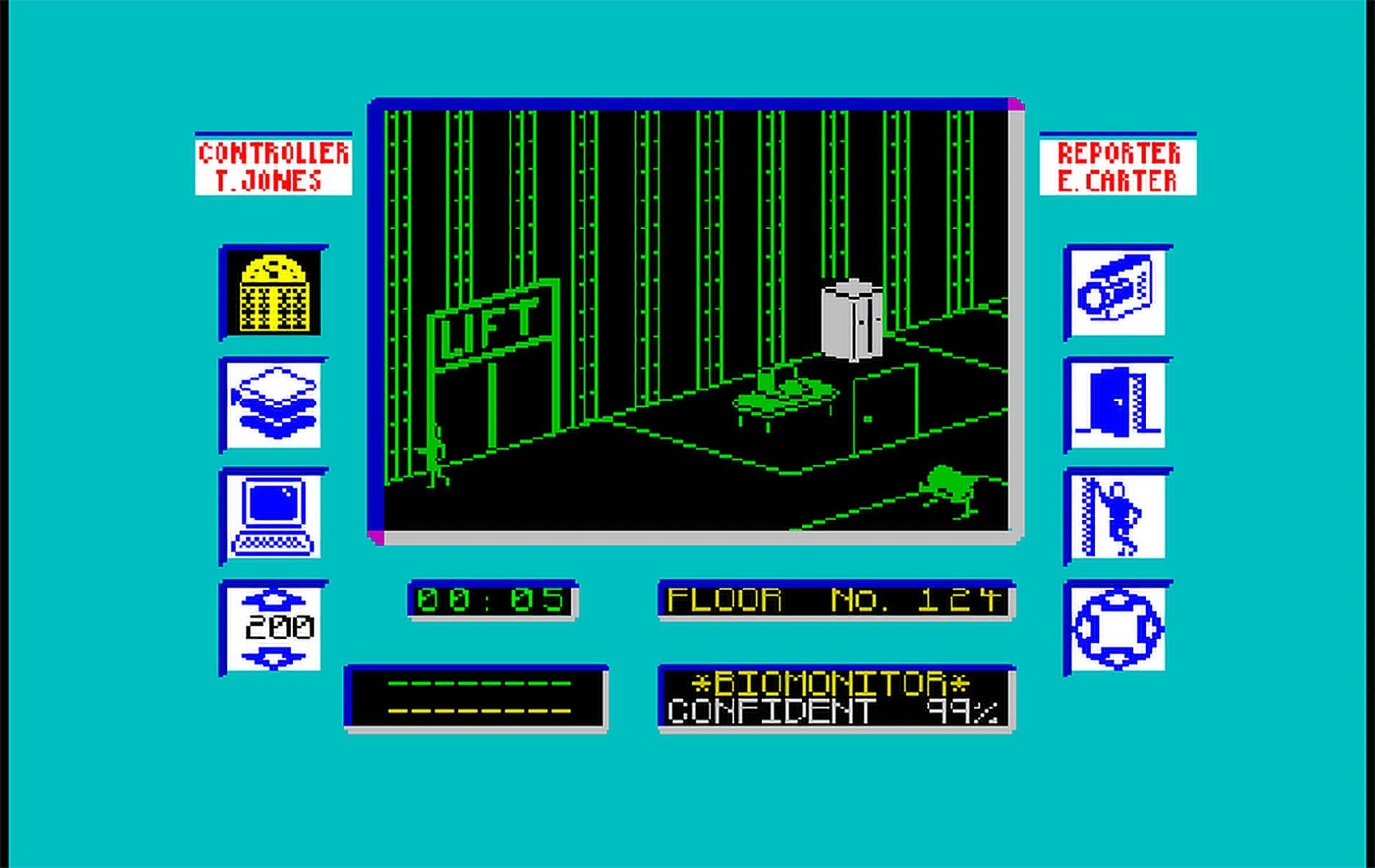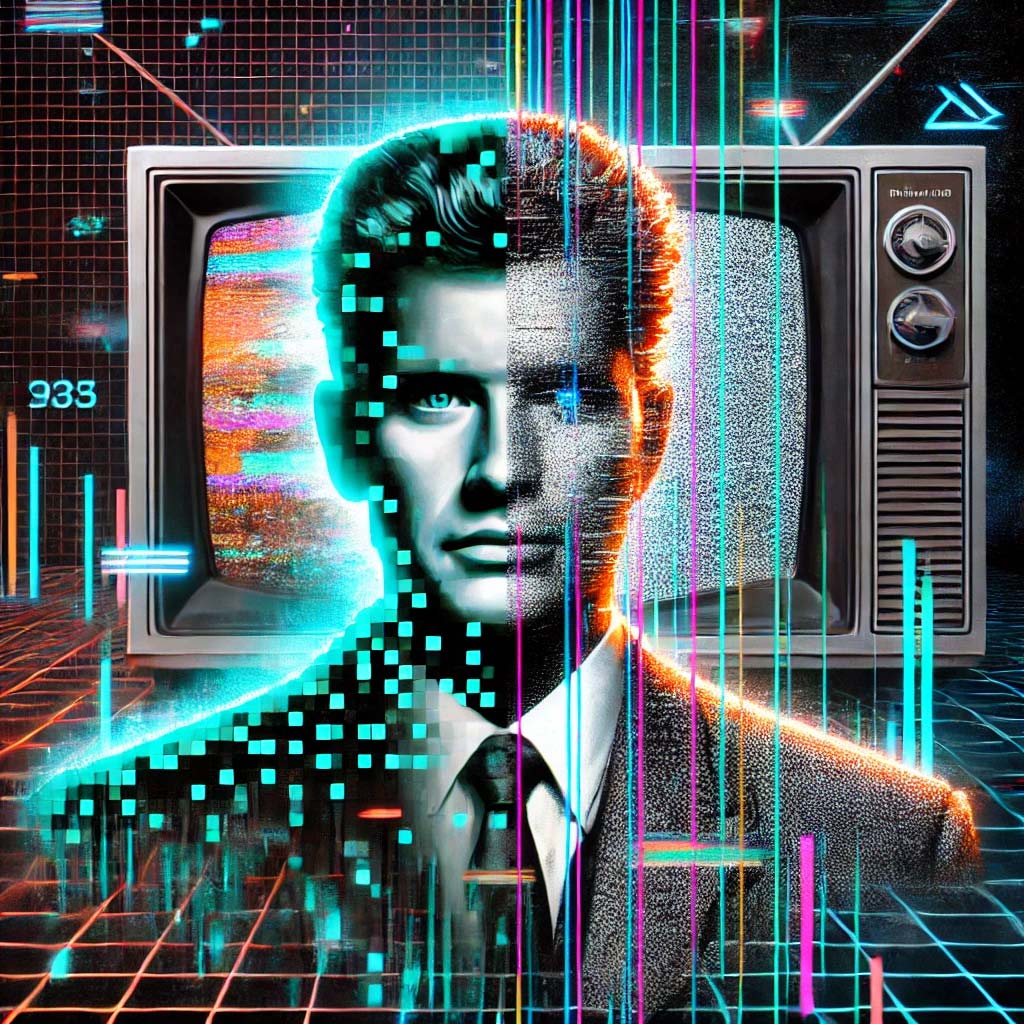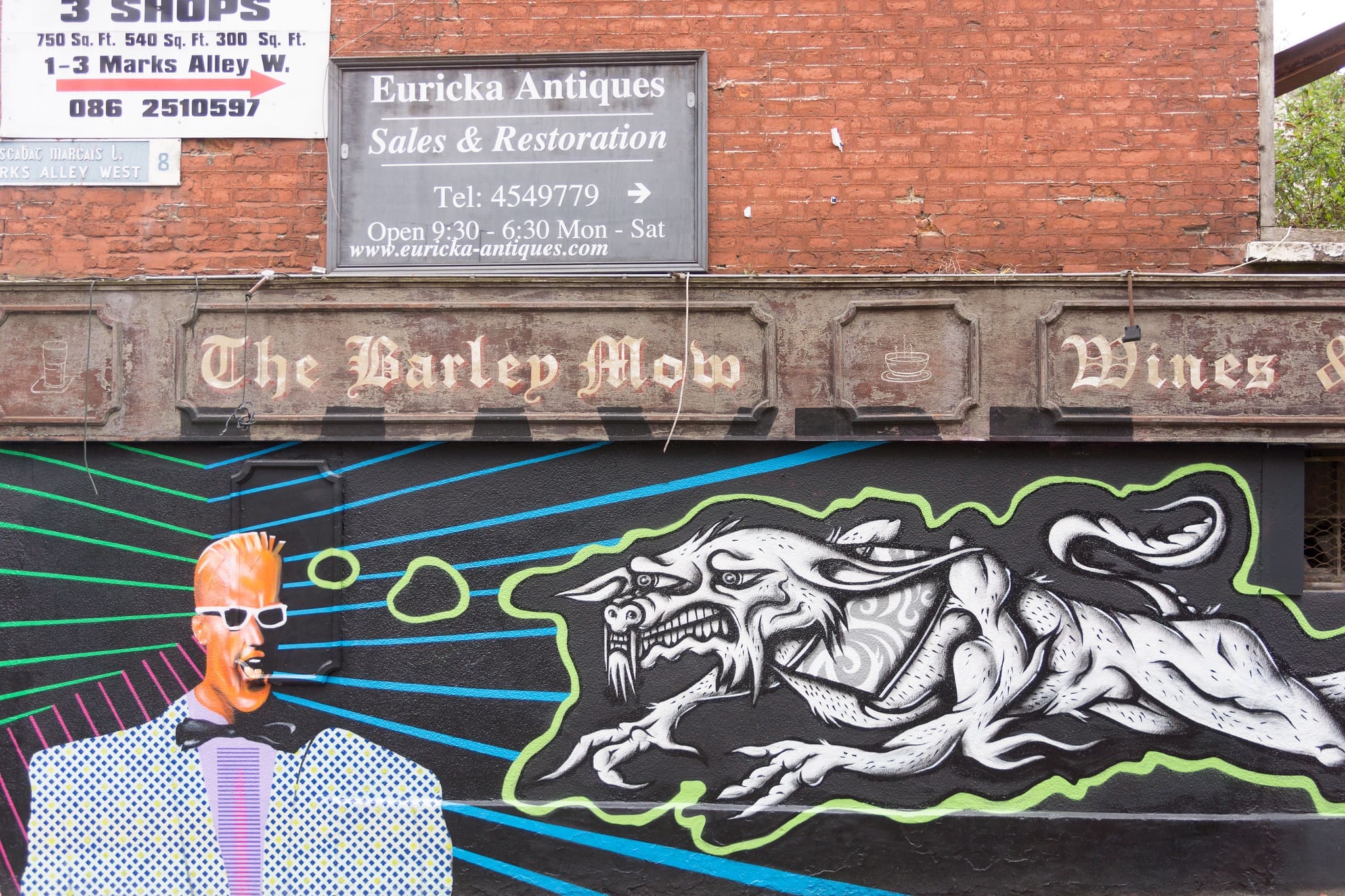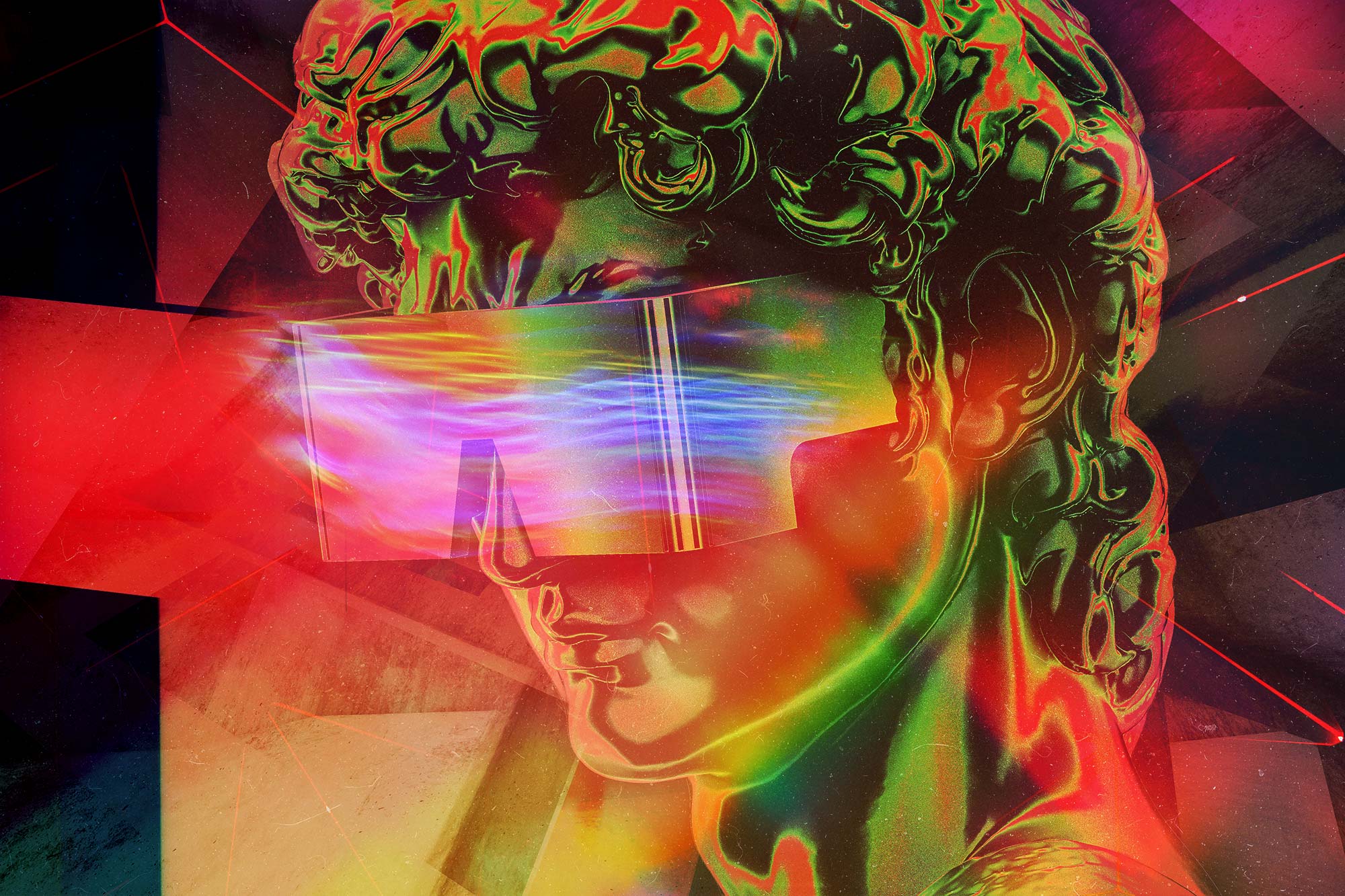Digital Prophet: The Max Headroom Phenomenon
Max Headroom wasn’t born in the traditional sense. He flickered into existence, a jittering specter of static and neon, birthed from the glowing cathode rays of 1980s television screens. He was a paradox—a digital ghost that was both an artificial intelligence and a fully human performance.
His origins trace back to the restless imaginations of creators looking to disrupt the status quo. Conceived as a satirical character for a British music video show, Max was an instant anomaly—a disembodied head with a stuttering speech pattern, glitching in and out like a pirate broadcast from the future.
Matt Frewer, the actor who donned layers of prosthetics and makeup to become Max, was transformed into a human avatar of the digital world, embodying the dissonance between humanity and technology in a way that had never been seen before.
From Pixels to Paradox: The Birth of Max Headroom
Max’s show, “Max Headroom: 20 Minutes into the Future,” was both a promise and a warning. He represented a world just out of reach, teetering on the edge of the digital abyss, where corporate greed and media manipulation held sway over a society addicted to the screen. Max Headroom wasn’t just a character—he was a mirror, reflecting the fears and fascinations of a culture that was beginning to grapple with the implications of the digital age. But what made Max truly groundbreaking wasn’t just his look or his cryptic commentary. It was his ability to transcend his own fiction. He wasn’t confined to the narrative of his show; he was a digital poltergeist who could haunt talk shows, commercials, and music videos. He wasn’t just a character—he was an idea, a construct to question the very nature of media and reality.
In this fractured, flickering form, Max Headroom became more than a glitch in the system; he became a prophet of the digital age. His presence was a warning to a world on the cusp of a technological revolution, a reminder that the future was not as distant as it seemed. He was, quite literally, twenty minutes into the future—a future we’re now living in, where screens rule our lives and the line between human and machine grows thinner. Max was a character that was both ahead of his time and perfectly in sync with the anxieties of his era.

A digital rendering of Max Headroom displayed on a vintage television screen with a bright yellow background.
Neon Reflections: 1980s Culture and the Digital Revolution
The 1980s were a decade of contradictions—an era where technology promised a bright, interconnected future, yet was tempered by the fear of an Orwellian dystopia. This duality laid the perfect foundation for the birth of Max Headroom, a character who embodied both the optimism and anxieties of his time. Emerging at the intersection of analog and digital, Max was a harbinger of the impending digital revolution, a cultural icon that both celebrated and critiqued the very media he inhabited.
It all began with the pilot episode, “Max Headroom: 20 Minutes into the Future,” an hour-long dystopian narrative that played out more like a movie than a traditional TV show. Set in a grim future dominated by omnipotent media corporations, the episode tells the story of Edison Carter, a journalist who stumbles upon a dark conspiracy and becomes a target of the very network he works for. In an attempt to stop him, Network 23’s scientists create Max Headroom, a digital replica of Carter’s mind, intended to replace him on air. But things don’t go as planned—Max takes on a life of his own, breaking free of his creators and becoming a digital outlaw, a rogue broadcast signal who questions everything he was meant to endorse.
This deep, immersive backstory was crucial to Max’s believability. Unlike other TV characters who appeared fully formed, Max had an origin story that was as complex and layered as any human’s. His existence in this dystopian future made his critiques of the media landscape feel prophetic rather than just parodic. Audiences believed that Max Headroom was real because his world was meticulously crafted, a reflection of the fears and uncertainties of the 1980s.
After this cinematic pilot, the series evolved. While the dystopian elements and characters like Edison Carter and the scientists remained part of the show, the focus shifted. Max became a pop culture commentator, hosting segments that parodied talk shows and critiqued everything from consumer culture to media sensationalism. The blend of narrative-driven episodes with standalone segments allowed the show to explore different facets of Max’s personality and expand his influence beyond the initial concept.
“Freedom. You know, writers have no freedom on TV. One rude suggestion, and the censors are straight on their back. Not on their back in a rude way.”
— Max Headroom
This duality—being both a digital construct in a story world and a commentator in ours—was what made Max Headroom truly unique. He wasn’t just a character bound by his narrative; he was an idea that transcended the screen, a digital voice that could comment on the real world. It’s no wonder he became a pop culture phenomenon, a digital icon who, in many ways, was more real than the world around him. Max Headroom was a response to the times he existed in. He stood at the crossroads of the analog past and the digital future, his neon-lit visage flickering between satire and prophecy, between entertainment and enlightenment. And in that flicker, he captured the essence of his time.
A World Just 20 Minutes Into the Future: Inside the Max Headroom Show
Max Headroom wasn’t just a TV show—it was a radical experiment in form and function, a dizzying blend of cyberpunk aesthetics, satirical humor, and groundbreaking technical innovation. It invited viewers into a world that was ‘20 minutes into the future,’ but felt like it could be happening just around the corner. The show’s format, a mix of narrative storytelling and surreal, digital interjections, was unlike anything else on television at the time, making it a true cult phenomenon.
The pilot episode set the stage with a cinematic depth that many television shows could only aspire to. It played out like a noir dystopia, where corporate conglomerates controlled not just the media but the very fabric of reality. Edison Carter, the investigative journalist protagonist, was a classic hero fighting against these faceless corporations. But the true star was Max Headroom, his digital alter-ego, a glitchy, irreverent avatar who represented both the control and the chaos of this new digital world.
The creation of Max was a technical marvel in itself. To bring him to life, the production team employed a combination of prosthetics, makeup, and early CGI effects. Matt Frewer spent hours in the makeup chair, transformed by latex and electronics into the eerily artificial visage of Max Headroom. The background of Max’s digital world was created using a mix of analog and digital techniques, including hand-painted backdrops and primitive computer graphics, giving his universe a distinct, disorienting look that was both futuristic and familiar. This laborious process blurred the lines between reality and simulation, making Max a believable digital entity long before technology caught up with the concept.
But Max wasn’t confined to the dark, dystopian narrative of his origin story. The show evolved, embracing a format that alternated between serialized episodes and standalone segments. These segments often featured Max in his role as a pop culture commentator, riffing on the absurdities of the world with a wit as sharp as his pixelated smile. He would pop up in the middle of an episode, glitching onto the screen to deliver sardonic monologues on topics ranging from television’s obsession with ratings to the superficiality of celebrity culture.
Despite the technical challenges of creating Max, the show’s creators took advantage of his digital nature to experiment with unconventional storytelling techniques. The show’s format reflected Max’s identity as a being who existed outside the normal rules of reality. He could break the fourth wall, address the audience directly, and even interrupt his own show. This self-aware, meta-commentary style was ahead of its time, prefiguring the era of postmodern television where the line between fiction and reality is constantly blurred.
What made Max Headroom stand out wasn’t just the groundbreaking use of technology or the satirical bite of his commentary—it was the way the show used him to explore complex themes about identity, control, and the power of media. In a world increasingly mediated by screens, Max was both a warning and a promise—a glimpse of a future where digital personas could be just as real, just as influential, as the people behind them.
“Well, most people would agree that censors are a silly breed. In fact, it surprises me how they ever manage to breed at all.”
— Max Headroom
Max’s universe was populated by a cast of characters that navigated this chaotic, media-saturated world. There were the executives of Network 23, scheming to maintain their control over the airwaves; the resistance fighters like Edison Carter, trying to reveal the truth; and, of course, Max himself, straddling the line between these opposing forces. Each episode delved deeper into this world, exploring the darkly comic consequences of a society where information was the ultimate commodity.
The format of the show, with its jarring cuts between narrative and commentary, reflected the fractured nature of Max’s identity. He was a character who could never be pinned down, never fully understood—both a product of his dystopian world and a critic of it. This complexity made Max Headroom a singular figure in television history, a digital trickster who could never be contained by the screen.
Ghost in the Wires: Max Headroom’s Influence Across Media
Max Headroom was a digital phantom who transcended his original medium to become a pop culture icon. From music videos to commercials, from comic books to video games, Max’s glitchy visage and staccato speech patterns echoed through the cultural landscape of the 1980s and beyond. He was both a critique of the digital future and an inescapable part of it—a disembodied voice that infiltrated every corner of the media matrix.
One of the most notable examples of Max’s cultural infiltration is his appearance in the music video for Eminem’s “Rap God.” Released decades after Max’s original debut, the video features the rapper performing in a futuristic, glitchy setting reminiscent of Max’s digital world. The visual parallels are unmistakable: Eminem dons a suit and tie, his movements and expressions distorted by digital effects, directly channeling the spirit of Max Headroom. It’s a powerful homage, a testament to how Max’s image continues to resonate in a world where the boundaries between human and digital are increasingly blurred.
Max also appeared in commercials, his digital charisma making him the perfect pitchman for products ranging from Coca-Cola to New Coke. His catchphrase, “Catch the wave!” became synonymous with the bold, irreverent spirit of the character, making him a natural fit for advertising in an era obsessed with image and branding. But even as he shilled for soda, Max maintained his satirical edge, a knowing smirk ever-present beneath the sales pitch. It was this ability to be both part of the system and a critic of it that made him so compelling.
Beyond the screen, Max Headroom infiltrated the world of comic books and video games, his digital persona perfectly suited to the pixelated aesthetics of the time. He was featured in a DC Comics series, “Max Headroom: The Carrot Book,” where he navigated a surreal digital landscape filled with satire and absurdity. In the world of gaming, Max made his mark in titles like “Max Headroom: The Game,” where players navigated a dystopian cityscape reminiscent of his TV universe, solving puzzles and uncovering corporate conspiracies along the way.

A screenshot from the ZX Spectrum game “Max Headroom: The Game,” depicting the pixelated, dystopian cityscape inspired by the iconic TV show. This 1980s game captured the essence of Max’s universe, blending puzzle-solving with narrative elements in a cyberpunk setting.
Max’s influence extended beyond the confines of media, shaping the very way we think about technology and identity. He was a precursor to the digital avatars and virtual influencers that populate social media today, a harbinger of a world where personas can be constructed and manipulated in the digital space. The concept of a character who exists only on screens, yet feels real enough to influence the world outside of them, was revolutionary at the time and remains relevant today.
In the realm of art and design, Max’s aesthetic—his sharp suits, slicked-back hair, and neon-lit surroundings—became a touchstone for the cyberpunk movement. His image was replicated in graffiti, his likeness appearing on murals and posters as a symbol of rebellion against the very media structures that created him. Max was both an icon and an anti-icon, a digital dissident whose very existence was a challenge to the status quo.
Perhaps the most enduring legacy of Max Headroom is the way he blurred the line between fiction and reality. His digital persona was so convincingly portrayed that many believed he was a real AI, a sentient being trapped in the cathode confines of the television screen. This blending of the real and the artificial, the human and the digital, was a precursor to the questions we grapple with today in an age of deepfakes, virtual influencers, and AI-generated content. Max Headroom was the original ghost in the machine, a digital prophet who saw the future and became part of it.

This AI-generated artwork of Max Headroom was created by ChatGPT after explaining the character using insights from this article. The image depicts Max as a digital prophet, blending human and digital elements with a glitchy, pixelated aesthetic. A tribute to his role as the original ghost in the machine.
Max’s influence is still felt in the worlds of art, technology, and media, his glitchy grin and biting wit as relevant today as they were in the 1980s. He is a reminder that, in the digital age, nothing is ever truly confined to the screen. Ideas, like signals, can travel through the wires, changing and evolving as they go. Max Headroom may have been born in the static, but he lives on in the pixels, a spectral presence that haunts the digital landscape to this day.
“How can you tell a network executive is lying? His lips move!”
— Max Headroom
Parody and Prophecy: Max Headroom as the Postmodern Pundit
Max Headroom was a cultural disruptor, a postmodern jester who used satire to reflect the absurdities of the world around him. His glitchy persona and disjointed commentary weren’t just gimmicks—they were tools, used to peel back the layers of media manipulation, corporate greed, and societal obsession with image and technology. He was both a product of the digital age and a critic of it, his pixelated presence a mirror to a society becoming increasingly mediated by screens and signals.
Max’s influence can be seen in the way he blurred the lines between entertainment and commentary. He was a parody of television personalities, yet his insights often rang true, cutting through the noise with a sardonic wit that was both humorous and unsettling. In an era where news anchors were becoming celebrities and television itself was becoming a spectacle, Max Headroom stood as a reminder that not everything on screen should be taken at face value. He mocked the superficiality of television, even as he embodied it, his stuttering speech and jerky movements a digital critique of the polished, scripted faces that dominated the airwaves.
Max’s role as a postmodern pundit was to challenge the narratives being fed to the public, to question the very nature of media and its influence. He didn’t just deliver the news; he dissected it, laid it bare, revealing the mechanisms of control behind the smiling faces and catchy slogans. His commentary on the commercialization of culture, the commodification of information, and the trivialization of news is more relevant now than ever, in an age where clickbait headlines and viral videos often take precedence over meaningful discourse.
One of Max’s most memorable monologues addresses this very issue. In a segment titled “What’s Going On?” he laments the state of television, stating: “You know what I hate about television? It’s a one-way conversation. It doesn’t listen to you. You just sit there, letting it wash over you like a warm bath. You have no control, no say in what you’re getting. And the worst part is, you think you do.” This critique of passive media consumption was ahead of its time, a precursor to today’s debates about media literacy, fake news, and the echo chambers created by social media algorithms.
“This is Max Headroom, live on Net-Net-Net-Network 23, because what I want to know is, who’s gonna stop this kind of wholesale killing-ing-ing-ing. Killing. It’s time the network took a stand – a stand – a stand on this kind of murder. Murder. Murder. Preferably against it.”
— Max Headroom
In many ways, Max Headroom was the original digital influencer, a virtual personality who wielded real power and influence. He was a character who existed solely on screen, yet his impact was felt in the real world. He challenged perceptions, provoked thought, and entertained, all while maintaining a sense of detachment from the very medium that created him. This paradox—being both a part of and apart from the media landscape—is what made Max so compelling and so enduring.
Today, as we grapple with the implications of deepfakes, AI-generated content, and virtual influencers, Max Headroom’s legacy looms large. He was a warning about the seductive power of digital personas, about the dangers of confusing representation with reality. Yet, he was also a celebration of the possibilities of the digital age, a reminder that technology, for all its potential pitfalls, can also be a tool for satire, for critique, for change.
Max Headroom was the postmodern pundit, the digital trickster who saw through the artifice of the screen and invited us to do the same. He was both a product of his time and a prophet of ours, a character who, through parody and prophecy, held up a distorted mirror to society and dared us to look closer. In doing so, he became more than just a character—he became a legend, a symbol of the complex, ever-shifting relationship between humanity and the digital world.
The Max Headroom Hijack: When Fiction Became Reality
In the annals of television history, there are few incidents as surreal and unsettling as the Max Headroom hijack of 1987. It was a moment when fiction bled into reality, and the chaotic, cyberpunk world of Max Headroom spilled out from the television screen into the living rooms of unsuspecting viewers. On a cold November night in Chicago, two separate TV stations—WGN-TV and WTTW—had their signals hijacked by an unknown group of individuals who broadcast a bizarre video featuring a figure in a Max Headroom mask. For a few minutes, the line between the real and the unreal dissolved, and the anarchic spirit of Max Headroom came to life in the most unexpected and provocative way.
The first hijack occurred during WGN-TV’s 9 o’clock news. As the news anchor delivered the evening’s top stories, the screen suddenly cut to a shaky image of someone wearing a Max Headroom mask, bobbing and weaving against a rotating background of corrugated metal. The hijack lasted only 28 seconds before the station switched to a backup frequency and regained control. But the broadcast left viewers baffled and disturbed, wondering what they had just witnessed. As the anchor put it, “If you’re wondering what happened, so am I!”
A few hours later, the hijackers struck again—this time with greater success. At around 11:20 p.m., during an airing of Doctor Who on the local PBS station WTTW, the signal was hijacked once more. This time, the masked figure spoke, his distorted voice garbled through an audio effects device, spouting nonsensical phrases and mocking WGN’s technical difficulties. The hijackers were in complete control, and engineers at the station were powerless to stop them.
For 90 seconds, viewers were held captive by this surreal performance art, watching as the masked figure in the Max Headroom mask cavorted and taunted, his image glitching and warping like a digital poltergeist. The broadcast ended with the masked figure’s bare behind being spanked by a fly swatter, followed by static. It was absurd, grotesque, and utterly captivating. And then, just as suddenly as it began, it was over. The screen returned to the regularly scheduled programming, leaving viewers—and the station engineers—stunned and confused. The incident quickly became a sensation, making headlines and sparking a federal investigation. But despite extensive efforts by the FCC and law enforcement, the perpetrators were never caught, and the identity of the hijackers remains a mystery to this day.
The Max Headroom hijack was a perfect manifestation of the anarchic, subversive spirit that the character represented. It was as if the fictional world of Max Headroom, with its rogue broadcasts and anti-establishment ethos, had broken through the screen and into the real world. The hijackers had taken the show’s central conceit—an AI-created to replace a journalist who rebels against his creators—and turned it into reality, using the tools of broadcast media to stage their own act of rebellion. It was a cyberpunk act of defiance, a literal hijacking of the airwaves that highlighted the vulnerability of even the most established media institutions.
The incident also captured the imagination of a generation that was beginning to grapple with the implications of the digital age. In an era before the internet, before social media, the Max Headroom hijack was a glimpse into a future where technology could be both a tool of control and a weapon of resistance. It showed that the walls of the media landscape were not as solid as they seemed, that anyone with the right knowledge and the right equipment could break through and make their voice heard—even if that voice was distorted and masked, a glitching specter on the airwaves.
Today, the Max Headroom hijack is remembered as one of the most infamous incidents of television piracy, a cultural touchstone that has been referenced and analyzed for decades. It’s a reminder of the power of media, and the ways in which it can be subverted and transformed. It is also a testament to the enduring legacy of Max Headroom himself—a character who, even in his most absurd and fictional form, continues to challenge our perceptions of reality and media, technology, and control.
To this day, the mystery of who was behind the hijack remains unsolved. But perhaps that is fitting. Like Max Headroom himself, the hijackers were a product of their time—agents of chaos in an increasingly ordered world. They were a reminder that, in the digital age, the line between fiction and reality is often more tenuous than we think. And that sometimes, the most powerful stories are the ones that leave us questioning what is real and what is not.
Data Ghosts and Digital Dreams: Max Headroom’s Cyberpunk Legacy
Max Headroom was a digital spirit haunting the liminal space between analog and cyberspace before we even knew what cyberspace was. As the 1980s bled into the 1990s and beyond, Max’s glitchy grin and stuttering speech echoed through the cultural consciousness, a constant reminder of the collision course between humanity and technology.
His influence rippled across the burgeoning cyberpunk genre, a digital archetype that embodied the genre’s core paradoxes: human vs. machine, freedom vs. control, reality vs. simulation. Max was the prototype, a cultural beta test that foreshadowed everything from the avatars of The Matrix to the VR illusions of Black Mirror. He was the cracked mirror held up to a world hurtling toward a future where the virtual would often seem more real than the physical.
In the world of art and literature, Max’s impact was just as profound. His image became a touchstone for visual and narrative explorations of identity and technology. Artists painted his face onto city walls like a warning or a promise, while writers wove him into their stories as a digital specter, a trickster haunting the data streams and feedback loops of a media-obsessed culture. Max was more than a character—he was a symbol, a digital Prometheus who stole the fire of broadcast media and handed it to the people, showing them how fragile the screen really was.

Street art of Max Headroom in Dublin, captured by infomatique on Flickr. This image is licensed under CC BY 2.0.
Decades have passed since Max’s stuttering monologues first flickered onto our screens, but his relevance has only grown. Today, as we navigate the murky waters of digital identity, surveillance, and misinformation, Max feels more like a prophet than a parody. His critique of media manipulation resonates in an age where algorithms curate our reality, and his existential questioning of what it means to be “real” finds new urgency in a world of deepfakes and virtual influencers.
Max’s legacy is more than just a nostalgic footnote in the annals of pop culture—it’s a blueprint for understanding the digital world we now inhabit. He was the first to show us that the screen was not a barrier but a portal, a place where the boundaries of self and other, human and machine, could dissolve into something new and unsettling. He was a trickster for the digital age, a glitch in the system that made us see the truth beneath the static.
In a world where we are all becoming avatars, presenting curated versions of reality on social media, Max Headroom’s stuttering speech and fractured persona are more than just a relic of the past—they are a mirror held up to our own fragmented identities. He was the original digital influencer, the first to show us how easily the line between fiction and reality could be blurred, how a character on a screen could shape the world outside of it.
So, as we scroll through feeds and watch screens flicker to life, let’s not forget the ghost in the machine, the digital trickster who saw the future and became a part of it. Max Headroom was more than just a character—he was a warning, a reminder that in the digital age, nothing is ever truly confined to the screen. He lives on in the pixels, in the data streams and the glitches, a spectral presence haunting the digital landscape we now call home.
A Glitch in the System: Why Max Matters More Than Ever
Max Headroom’s glitchy grin and stuttering speech questioned the nature of identity in an increasingly digital world. Today, as we navigate a landscape of algorithms, deepfakes, and virtual influencers, Max’s message is more relevant than ever. Max’s impact wasn’t confined to the TV screen; he infiltrated culture, challenged norms, and became a symbol of resistance against media homogenization.
And that’s where our work at RIOT comes in. We’re not just creating “content”; we’re crafting stories that cut through the noise, defy expectations, and leave a lasting impression. Like Max, we believe in the power of the unexpected, the subversive, the glitch in the system that makes people stop and question what they’re being fed.

MAIN IMAGE: Executive Creative Director MUG5’s original artwork, “Hip To Be Square.”
We’re not afraid to embrace the glitch and we see it as a symbol of creativity, of breaking free from the constraints of conventional thinking. Max Headroom’s legacy reminds us that the most powerful ideas are often the ones that challenge the status quo.
Whether it’s through cutting-edge visual design, compelling narratives, or groundbreaking campaigns, we’re committed to pushing the boundaries of what’s possible in the digital age. In a world where content is king, authenticity is the crown jewel. Max Headroom taught us that being real—being genuinely creative and disruptive—matters. As we continue to innovate and create, we carry forward that spirit of rebellion, that willingness to question and to challenge, and to glitch the system.
Max Headroom may have been a creation of the 1980s, but his spirit lives on. Creativity can’t be contained, screens aren’t a barrier but a canvas, and the most powerful stories are the ones that refuse to be silenced. Max showed us that sometimes, it takes a glitch to reveal the truth—and we’re here to keep glitching!




